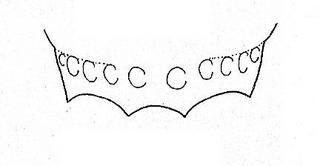
R. M. Bohart L. S. Kimsey, 1982 · 1
Chrysis angolensis, tail |
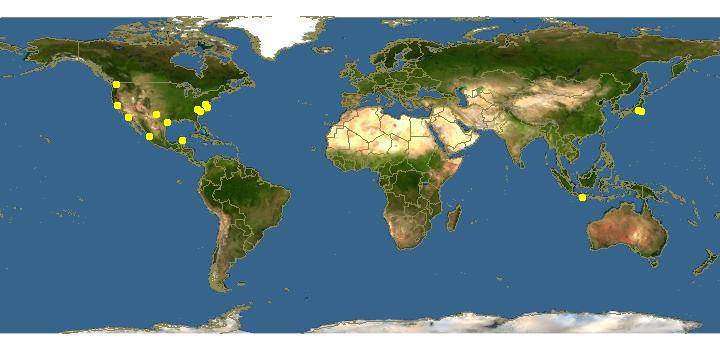
Click on map for details about points.
|
| Links |
We parsed the following live from the Web into this page. Such content is managed by its original site and not cached on Discover Life. Please send feedback and corrections directly to the source. See original regarding copyrights and terms of use.
- Australian Faunal Directory
|
80x5 -
240x3 -
240x4 -
320x1 -
320x2 -
320x3 -
640x1 -
640x2
Set display option above.
Click on
images to enlarge. |
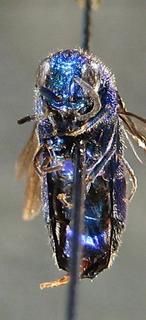
Native Bee Inventory and Monitoring Lab; Photographer: Erika Tucker · 1
Chrysis angolensis, face |
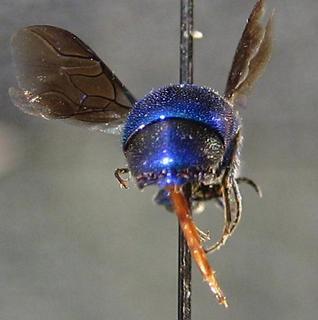
Native Bee Inventory and Monitoring Lab; Photographer: Erika Tucker · 1
Chrysis angolensis, tail |
|
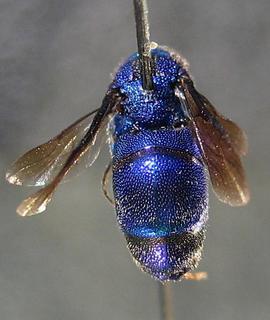
Native Bee Inventory and Monitoring Lab; Photographer: Erika Tucker · 1
Chrysis angolensis, top |
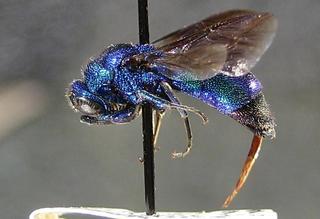
Native Bee Inventory and Monitoring Lab; Photographer: Erika Tucker · 1
Chrysis angolensis |
|
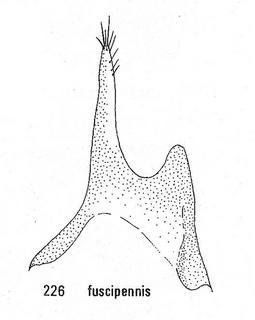
R. M. Bohart L. S. Kimsey, 1982 · 1
Chrysis angolensis, male paramere |
|
Overview |
Taken from:
R. M. Bohart and L. S. Kimsey. 1982. A Synopsis of the Chrysididae in America North of Mexico.
Chrysis fuscipennis Brulle
(Figs. 172, 226)
Chrysis fuscipennis Brulle l846:38. Holotype female, Philippines (Paris).
Chrysis erratica Buysson 1887:189. Syntypes, male, female, China. Egypt (Abeille Coll.). Synonymy by Mocsary 1889:370.
Chrysis pulchellus Cameron 1888:126. Nec pulchella Spinola 1808.
Diagnosis: F-I 1.5 times longer than broad (male) or 2.0 (female), longer than F-III, subantennal distance 1.5 MOD, malar space 1.3 MOD (male) or 1.7 MOD (female), OOD 2.0 LOD, transverse frontal carina a broad inverted U with backward branches to enclose midocellus, genal carina separated somewhat from eye, midocellus slightly lidded, mesopleuron bidentate, metanotum simple, T-II punctures not contiguous, median ridge weakly developed and polished, T-III with four short teeth (fig. 172), pit row following a broad low bulge; male S-VIII and cuspis subtriangular, paramere with exaggerated saddle shape (fig. 226), body length 7-11 mm.
Discussion: The bidentate mesopleuron, dark blue body with brown wings, and relatively large size facilitate identification.
Hosts: In the Orient it has been reported as a parasite in mud nests of Sceliphron and Eumenes. In the U.S. it was presumably introduced during World War II, possibly in Sceliphron mud nests on returning machinery or aircraft. In any case it subsequently attacked prepupae of Sceliphron caementarium (Drury) as reported by Stage (1960). It now causes considerable fluctuation in population levels of its well known semidomestic host.
Material examined: 47 males, 103 females including type of fuscipennis.
Distribution: Oriental, Palearctic and Australian Regions. In the U.S. it is known from New Jersey, Maryland, District of Columbia, Virginia, Tennessee, Kentucky, Missouri, Nevada, California, and Hawaii. In Mexico it has been found in Tamaulipas (Matamoros).
|
|
| Supported by | |
|
Following modified from Australian Faunal Directory
|
Top | See original
| &pull 20q v5.145 20180528: Error 301 Moved Permanently http://biodiversity.org.au/afd/taxa/f03a8b86-93b4-42a6-b5a3-2b16c9d9011e/ |
Updated: 2024-04-26 17:32:29 gmt
|